#Ernest Beaux
Explore tagged Tumblr posts
Photo
"I present my dress collections on the fifth of May, the fifth month of the year and so we will let this sample number five keep the name it has already, it will bring good luck."
-- Coco Chanel, 1921

#Chanel No. 5#Chanel#Coco Chanel#103 years of awesomeness#I wish they had never reforulated it#Ernest Beaux#perfume#fragrance#legend
2 notes
·
View notes
Photo

detail from Les Premières Funérailles, 1883 by Louis-Ernest Barrias
#louis-ernest barrias#art#sculpture#ernest barrias#1880s art#1880s#1800s art#mine#beige#beige aesthetic#dark#classical art#19th century art#beaux arts#beaux-arts#academicism#french art#french artist#xix century#xix century art
69 notes
·
View notes
Photo

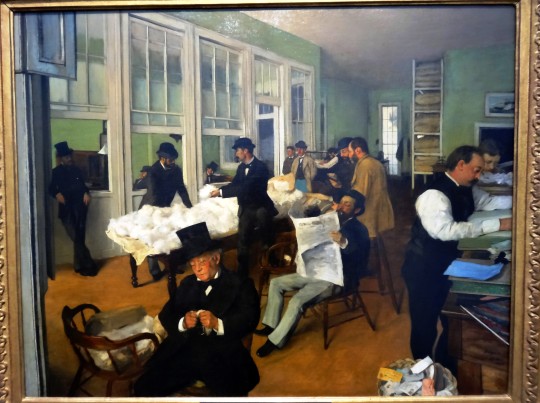

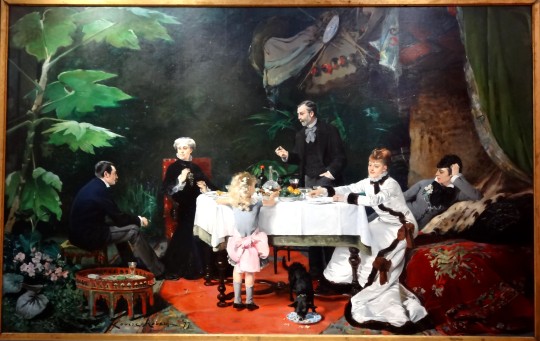

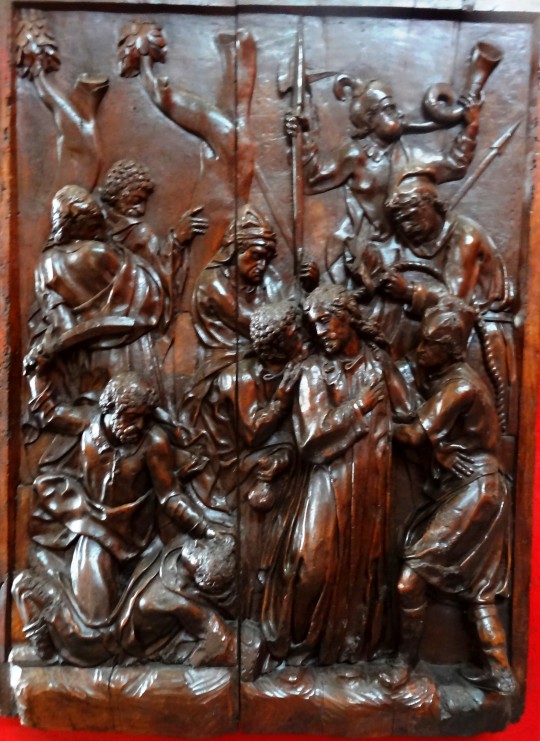
Je reviens à mon projet de présenter la plupart de mes 55000 photos (nouveau compte approximatif. On se rapproche du présent !). 2015....
Chez Christine à Pau. Une visite au Musée des Beaux-Arts :
- Raoul de Pibrac - "Atelier de Sandaliers”
- Edgar Degas - "Un bureau de coton à la Nouvelle-Orléans”
- Paul Eugène René Sieffert - “I Barcatori”
- Louise Abbema - "Le Déjeuner dans la Serre”
- Ernest Bordes - "Le Concierge est Tailleur”
- Vicente Basabe - "Le Baiser de Judas”
#souvenirs#art#pau#musée des beaux-arts#raoul de pibrac#sandalier#degas#edgar degas#nouvelle-orléans#new orleans#sieffert#paul eugène rené sieffert#louise abbema#abbema#serre#ernest bordes#concierge#tailleur#vicente basabe#basabe#judas
6 notes
·
View notes
Text








Marguerite Burnat-Provins (1872-1952) was born in Arras, in northern France. She was the eldest of seven children born to prosperous, cultured, middle class family. Indeed, her father encouraged her keen interest in writing and painting. In 1891 she left for Paris, where she followed arts-based curricula in various schools, since the École des beaux-arts did not yet admit women. At the age of twenty-four she married Adolphe Burnat-Provins, a Swiss architect she met in Paris, and the couple moved to Vevey, Adolphe's hometown. In 1898, on the advice of a friend, the painter Ernest Biéler, she started making regular trips to Savièse in the Valais to paint and write. The area's sunny climate was good for her fragile health and allowed her to develop her talent. Marguerite Burnat-Provins produced a number of paintings, embroideries and posters; she also pursued various literary projects. In 1906 she met Paul de Kalbermatten, a young engineer from the Valais, with whom she had a passionate affair. This precipitated her divorce from Adolphe in 1908 and her marriage to Paul. The couple were living in Bayonne at the outbreak of the First World War; Paul was called up in Switzerland, while Marguerite remained in France. The war proved to be a hugely traumatic experience for Marguerite, inspiring her to undertake a completely new work, entitled Ma Ville. Painted ‘under dictation and not by deliberate design’, the compositions in Ma Ville are peopled by hybrid figures that are part-human, part-beast. She continued to develop this project right up until her death, while also publishing several books. (source)
95 notes
·
View notes
Text


Narcissus (1868), marble - Ernest-Eugène Hiolle (1834–1886), French sculptor.
Musée des Beaux-Arts de Valenciennes.
41 notes
·
View notes
Text
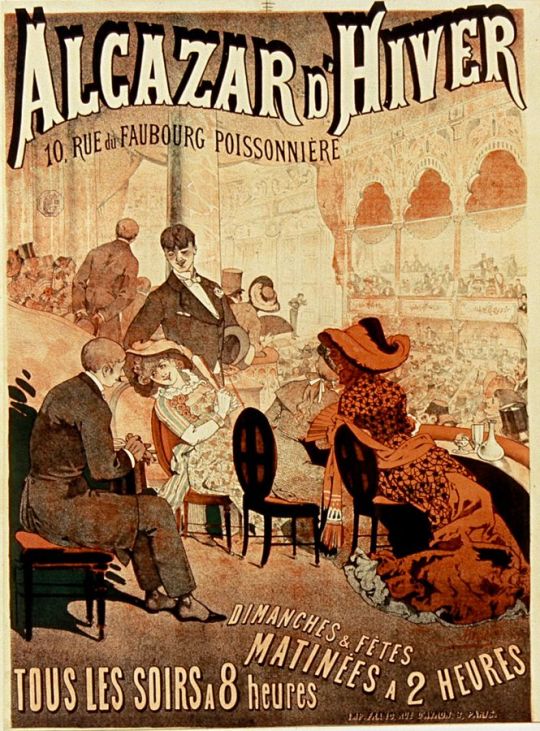
Léon Choubrac - Alcazar d'Hiver - 1882
Léon Choubrac (17 November 1847 – 5 April 1885), who sometimes signed his drawings with Hope, was a French poster designer and illustrator based in Paris.
With his younger brother Alfred Choubrac, Léon was trained as a classical artist with the painters Charles Doërr and Isidore Pils at the École des Beaux Arts. The Choubrac brothers came very soon to the poster, practicing since 1875 the modern treatment of colors and typography, associated with images thanks to chromolithography.
In the early 1870s, the Choubrac brothers and Jules Chéret (known as "the father of the modern poster") reduced the cost of colour lithography introducing technical advances. Additionally, in 1881 restrictions on bill-posting (affichage) were lifted and eased state control of the media in France. In 1884, the Paris city council started to rent out surfaces belonging to the municipality, paving the way for a rapid increase in the production and distribution of advertising posters. Posters with clear colours and dashing images appeared all over town during the vibrant spirit of the Belle Époque.
Léon Choubrac drew some posters that higher authorities seized or torn down, amongst others one that showed a woman tortured in the presence of the Pope. Another poster, The secret loves of Pius IX, showed the portrait of Pope Pius IX below a series of portraits with heads of young women. The censor made him add a beard to the head of the Pope to disguise it. The poster nevertheless caused a scandal and was torn down by order of the French Minister of the Interior François Allain-Targé.
Léon and Alfred created the Ateliers Choubrac. As an illustrator, he sometimes collaborated with his brother in Gil Blas or the satirical weekly Le Courrier français, among others. Choubrac illustrated several works by Emile Zola. Although Leon died young (1885), his brother Alfred went on to produce an impressive number of posters for Parisian entertainers, theatres, businesses and various commercial products.
The poster collector Ernest Maindron, who wrote the first essay about the illustrated poster in the Gazette des Beaux-Arts in 1884, and later published the first book on the subject (Les Affiches Illustrees) in 1886, mentioned the Choubrac brothers, along with and Chéret, among the pioneers of the illustrated poster.
31 notes
·
View notes
Text

Ernest Bieler (Swiss, 1863–1948) • Portrait du peintre par lui-même (Portrait of the Artist by Himself) • 1911 • Watercolor and gouache • Musée Contonal des Beaux-Arts, Lausanne, Switzerland
#art history#art#painting#watercolor and gouache#ernest biéler#swiss artist#art nouveau#early 20th century european art#self portrait#the canvas mirror art blog#art blogs on tumblr#art lovers on tumblr
16 notes
·
View notes
Text
On "coriander tastes of soap"
Whether, as the legend goes, the slug of aldehydes was a serendipitous mistake on the part of a lab technician preparing a trial, or whether Chanel’s perfumer, the brilliant Ernest Beaux, came upon the trick himself, it’s impossible to know, but they changed fragrance forever. Yet many more aldehydic florals have entered the market since; they have trickled down to soap formulas to the point that we think of them as the smell of soap. Chanel No. 5 stands out more than ever.
9 notes
·
View notes
Text
Get Your Art Fix!
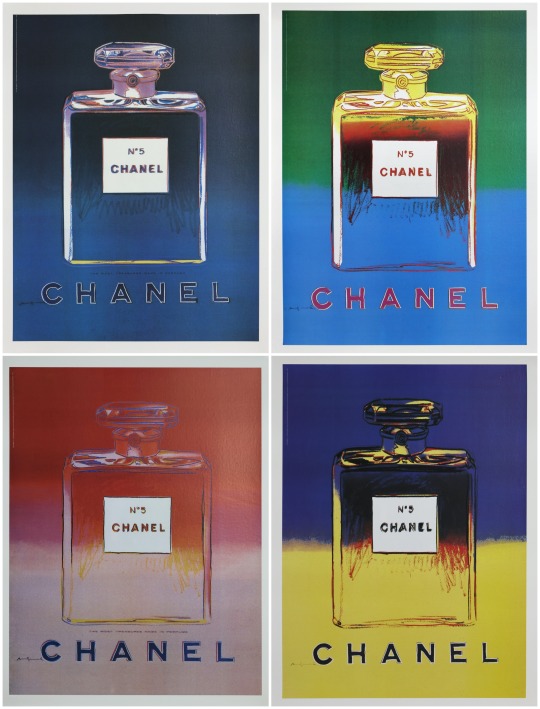
“What do I wear in bed? Why, Chanel No. 5, of course” ~ Marilyn Monroe
"Chanel No. 5 (Suite of Four Posters)" by Andy Warhol, 1997
Arty-Fact: Chanel No. 5, printed under the auspices of the estate of Andy Warhol, comes from the artist's Ads Portfolio.
Created by Ernest Beaux for Coco Chanel in 1921, Chanel No. 5 became synonymous with sophistication and luxury, two qualities Andy Warhol hoped to instil in his work.
Today, Chanel perfume remains a household name, just as it was during the Warhol era. In 1997, Chanel revisited the image, with the Warhol Foundation's permission, for use in an advertising campaign that year. The rich blue, red, gold, and green hues bring this simple rectangular bottle to life. The Chanel No. 5 perfume bottle stands alone as an iconic design.
Many of these posters appeared on buses and public transportation throughout Paris. It is not known how many were printed or how many remain today, but this gorgeous suite of four French vintage posters remains highly desirable.
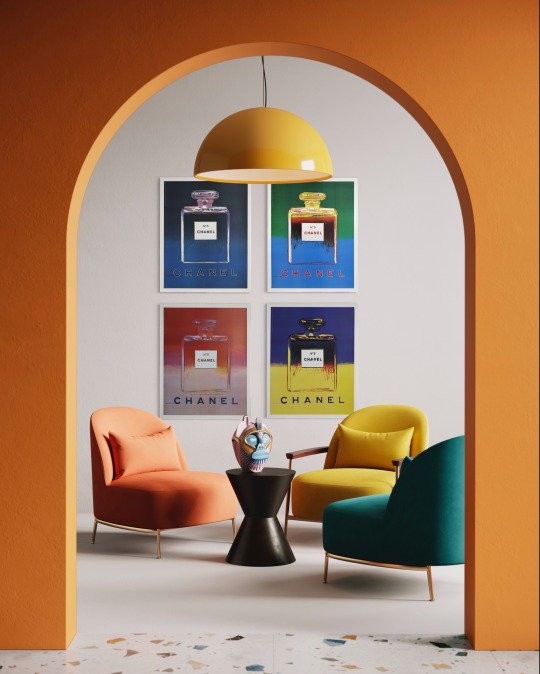
See It On Your Wall
#Andy Warhol#pop art#poster art#Chanel No. 5#Coco Chanel#perfume#luxury#advertising#sophistication#storytelling#art gallery#online art gallery#buy art#art collectors#art collecting#art collection#home decor ideas#interior styling ideas#Get Your Art Fix
7 notes
·
View notes
Text
Burnat-Provins Marguerite - Chansons rustiques

Burnat-Provins Marguerite - Chansons rustiques : Intitulés Chansons rustiques, ces 130 poèmes en prose sont écrits durant la période « valaisanne » de Marguerite Burnat-Provins. Installée avec son mari Adolphe Burnat sur les bords du Léman, elle découvre le Valais en 1898 grâce au peintre Ernest Biéler. C’est un éblouissement. Marguerite Burnat-Provins va passer tous ses étés, jusqu’en 1907, dans le village valaisan de Savièse. La beauté de la nature et les coutumes ancestrales du « Vieux Pays » sont sources d’inspiration, tant littéraire que picturale. Plusieurs de ces poèmes vont à leur tour inspirer des compositeurs, notamment Émile Jaques-Dalcroze en 1909. Après le succès de ses deux premiers livres, Petits tableaux Valaisans en 1903 et Heures d’automne en 1904, Marguerite Burnat-Provins s’associe à nouveau à l’éditeur veveysan Säuberlin & Pfeiffer pour Chansons rustiques. L’édition originale de 1905 mentionne que «pour orner les Chansons rustiques, Mme Burnat-Provins a emprunté aux habitations valaisannes, au mobilier, aux vêtements, à des ustensiles divers, de naïves décorations dont elle a tenu à respecter le caractère». Parmi celles-ci : encadrements de fenêtres et de portes, galon de chapeau, coffret, peinture murale, dessus de cadran solaire, motif de boîte à fromage. La BNR les a reproduites. Marguerite Burnat-Provins est née à Arras (Pas-de-Calais) en 1872. Elle rencontre son futur mari, un jeune architecte suisse, Adolphe Burnat (1872-1946), lors de ses études à l’École des Beaux-Arts de Paris. Ils se marient en 1896 et s’installent à Vevey. Dans ce milieu conservateur et étriqué, la jeune femme s’ennuie. Elle donne plusieurs conférences et encourage les femmes à s’émanciper de la tutelle masculine. Elle écrit ses premiers livres et peint des œuvres inspirées de l’Art nouveau. La rencontre en été 1906 avec Paul de Kalbermatten bouleverse sa vie. Le Livre pour toi témoigne de leur relation passionnée, tout comme Cantique d’été et Le Cœur sauvage. Mais les amants sont mis au ban de la société et quittent la Suisse pour s’établir en France. Marguerite divorce d’Adolphe Burnat et épouse Paul de Kalbermatten en 1910. En août 1914, le tocsin appelant à la mobilisation déclenche en Marguerite Burnat-Provins un profond traumatisme psychologique. Pendant près de 40 ans, elle va peindre plus de 3’000 dessins et aquarelles représentant des personnages ou des animaux issus de visions ou d’apparitions qui s’imposent à elle. Plusieurs psychiatres s’intéressent à ces phénomènes inexplicables. Elle nommera ce corpus Ma Ville. Elle décède en 1952 dans sa maison près de Grasse, laissant une œuvre littéraire d’une vingtaine de textes et poèmes ainsi que des milliers de peintures, d’estampes et d’aquarelles. Téléchargements : ePUB - PDF - HTML - DOC/ODT Read the full article
0 notes
Text
The Evolution of Branded Perfumes - From Local Favourites to International Bestsellers
The world of branded perfumes in Sri Lanka has undergone a significant transformation over the centuries. What began as simple local concoctions has now evolved into a massive global industry, with branded perfumes becoming synonymous with luxury and personal expression. This article explores the journey of branded perfumes from their humble beginnings to their status as international bestsellers for birthday gifts for girlfriend in Sri Lanka.
Ancient Origins and Early Local Perfumes
Perfume’s history such as Giorgio Armani Perfumes in Sri Lanka dates back thousands of years, with its earliest use recorded in ancient Egypt, Mesopotamia, and the Indus Valley. Initially, perfumes were made from natural ingredients like flowers, herbs, and spices, used for religious ceremonies, burial rituals, and personal adornment.
- Egypt: The Egyptians were pioneers in the use of perfumes, utilizing fragrant oils and balms in their religious and burial practices. The scent was believed to connect the living with the gods.
- Mesopotamia and Indus Valley: These regions also developed sophisticated techniques for extracting scents from plants and flowers, using them for both spiritual and personal purposes.
The Middle Ages and the Birth of Modern Perfume
The knowledge of perfume-making spread through ancient trade routes to Greece, Rome, and eventually Europe. During the Middle Ages, the art of perfumery flourished in the Islamic world, particularly in regions like Persia and the Arabian Peninsula. This knowledge was later transferred to Europe through the Crusades and expanding trade networks.
- Islamic Influence: Islamic chemists, such as Avicenna, improved distillation techniques, making the extraction of essential oils more efficient.
- Renaissance Europe: With the Renaissance, perfumes became popular among European nobility. Italian and French perfumers gained prominence, and the demand for exotic scents grew.
The Rise of Branded Perfumes in the 19th Century
The 19th century marked a significant turning point in the evolution of perfumes, with the industrial revolution bringing new techniques and ingredients to the industry.
- Synthetic Ingredients: The discovery of synthetic ingredients allowed perfumers to create new scents that were previously impossible with natural materials alone.
- Commercialization: Perfume production became more commercialized, with brands like Guerlain (founded in 1828) and Coty (founded in 1904) establishing themselves as pioneers in the industry.
The Golden Age of Perfume in the 20th Century
The early to mid-20th century is often referred to as the golden age of perfume, characterized by the creation of some of the most iconic fragrances and the emergence of several major brands.
- Chanel No. 5 (1921): One of the most famous perfumes of all time, Chanel No. 5, was introduced by Coco Chanel and perfumer Ernest Beaux. It revolutionized the industry with its complex, aldehydic composition.
- Christian Dior (1947): Dior launched Miss Dior, a fragrance that became an instant classic and set the stage for the brand’s future successes.
- Expansion of Luxury Brands: Many fashion houses, such as Yves Saint Laurent, Gucci, and Givenchy, expanded into perfumes, establishing themselves as major players in the fragrance market.
The Globalization of Perfume Brands
In the latter half of the 20th century and into the 21st century, perfumes became a global phenomenon. Brands expanded their reach through international marketing and distribution strategies, transforming local favourites into international bestsellers.
- Marketing and Advertising: With the advent of television and later the internet, perfume brands leveraged sophisticated marketing campaigns to reach global audiences. Celebrity endorsements and high-budget advertisements became commonplace.
- Global Distribution: Advances in logistics and supply chain management allowed perfumes to be distributed worldwide, making luxury fragrances accessible to a broader market.
- Cultural Influence: Perfume brands began to cater to diverse cultural preferences, launching region-specific scents and marketing campaigns.
The Modern Perfume Industry
Today, the perfume industry is a multi-billion-dollar global market characterized by continuous innovation and fierce competition.
- Niche and Indie Brands: Alongside established luxury brands, niche and indie perfume houses have gained popularity, offering unique and artisanal scents.
- Sustainability: Increasingly, consumers demand sustainable and ethically produced perfumes, leading brands to adopt eco-friendly practices and transparent sourcing.
- Digital Transformation: E-commerce and social media have transformed how perfumes are marketed and sold, with online influencers and reviews playing a significant role in consumer decisions.
The evolution of branded perfumes from local favourites to international bestsellers is a testament to the enduring appeal of fragrance and its ability to adapt to changing times and tastes. From ancient rituals to modern-day luxury, perfumes have become an integral part of human culture and personal expression. As the industry continues to evolve, it will undoubtedly embrace new trends and technologies, continuing to captivate and inspire people around the world.
#Branded Perfumes Sri Lanka#Birthday Gifts for Girlfriend Sri Lanka#Giorgio Armani Perfumes in Sri Lanka
0 notes
Text
The 12 Most Popular Perfumes Everyone Talks About
Perfumes hold a special place in our lives, defining personal style and creating lasting memories. Some fragrances have gained iconic status and are widely celebrated for their captivating scents. Here are the 12 most popular perfumes that everyone talks about, revered for their unique compositions and timeless appeal.
1. Chanel No. 5
Chanel No. 5 is arguably the most famous perfume in the world. Created in 1921 by Ernest Beaux, this fragrance revolutionized the perfume industry with its abstract, complex composition. It features aldehydes, jasmine, rose, sandalwood, and vanilla, creating a timeless and elegant scent. Chanel No. 5 is celebrated for its sophisticated and iconic aroma, making it a favourite among women for generations.
2. Dior J'adore
Dior J'adore, launched in 1999, is a luxurious and sensual fragrance that epitomizes femininity. Its blend of fresh citrus, floral, and oriental notes creates a sophisticated and alluring scent. The top notes of bergamot and pear provide a fresh opening, while the heart of jasmine, rose, and ylang-ylang adds a touch of femininity. The base notes of vanilla and cedarwood give it a warm, earthy finish. J'adore's captivating blend makes it a standout fragrance that many adore.
3. Yves Saint Laurent Black Opium
Yves Saint Laurent Black Opium, introduced in 2014, is a bold and seductive perfume known for its addictive qualities. It features a unique combination of coffee, vanilla, and white flowers, creating a sweet yet edgy fragrance. The top notes of pink pepper and orange blossom add a spicy freshness, while the heart of coffee and jasmine brings an intriguing depth. The base of vanilla, patchouli, and cedarwood ensures a warm and lingering finish.
4. Marc Jacobs Daisy
Marc Jacobs Daisy, launched in 2007, captures the essence of youthful exuberance and is known for its light and whimsical fragrance. It opens with fresh notes of wild strawberry and violet leaves, followed by a floral heart of jasmine and gardenia. The base of musk and vanilla adds a subtle warmth, making it a fresh yet comforting scent. Daisy’s playful and charming aroma is ideal for daytime wear.
5. Viktor & Rolf Flowerbomb
Viktor & Rolf Flowerbomb, released in 2005, is a floral explosion that leaves a lasting impression. Its combination of rich, sweet, and floral notes creates a powerful and enchanting scent. The top notes of bergamot and tea provide a fresh start, while the heart of jasmine, orchid, and rose offers a lush bouquet of florals. The base notes of patchouli and vanilla give it a warm, seductive finish.
6. Gucci Bloom
Gucci Bloom, introduced in 2017, celebrates the beauty and diversity of the floral world. It features a blend of white flowers, including jasmine, tuberose, and Rangoon creeper, creating a rich and intoxicating floral scent. The fragrance is fresh, natural, and sophisticated, making it a perfect choice for spring and summer. Gucci Bloom is appreciated for its pure, elegant, and feminine scent that is both modern and timeless.
7. Lancôme La Vie Est Belle
Lancôme La Vie Est Belle, launched in 2012, is a joyful and elegant fragrance that celebrates life's beauty. Its blend of sweet and floral notes creates a warm and inviting scent. The top notes of blackcurrant and pear provide a fruity freshness, while the heart of iris, jasmine, and orange blossom adds a floral richness. The base of praline, vanilla, and patchouli gives it a sweet and lasting finish.
8. Tom Ford Black Orchid
Tom Ford Black Orchid, released in 2006, is a luxurious and mysterious fragrance that exudes confidence and sophistication. Its blend of dark, rich, and exotic notes creates a complex and captivating scent. The top notes of black truffle and ylang-ylang are followed by a heart of black orchid and lotus wood. The base of patchouli, vanilla, and incense provides a warm and sensual finish.
9. Jo Malone Peony & Blush Suede
Jo Malone Peony & Blush Suede, introduced in 2013, is a fresh and romantic fragrance that combines floral and fruity notes. The top note of red apple provides a crisp and juicy opening, while the heart of peony, jasmine, and rose adds a soft and feminine floral bouquet. The base of suede gives it a smooth and luxurious finish. This delicate and elegant scent is perfect for daytime wear and has a subtle charm that many find irresistible.
10. Dolce & Gabbana Light Blue
Dolce & Gabbana Light Blue, launched in 2001, is a refreshing and invigorating fragrance that captures the essence of a Mediterranean summer. Its blend of citrus, floral, and woody notes creates a vibrant and uplifting scent. The top notes of Sicilian lemon and apple provide a fresh and fruity start, while the heart of jasmine and white rose adds a soft floral touch. The base of cedarwood and musk gives it a warm and enduring finish.
11. Chanel Coco Mademoiselle
Chanel Coco Mademoiselle, introduced in 2001, is a modern classic that exudes elegance and sophistication. Its blend of fresh citrus, floral, and oriental notes creates a balanced and alluring fragrance. The top notes of orange and bergamot provide a fresh opening, while the heart of jasmine and rose adds a touch of femininity. The base notes of patchouli and vetiver give it a warm, earthy finish that lingers beautifully on the skin.
12. Aariz Intense
Aariz Intense is a relatively newer addition to the list of popular perfumes but has quickly gained acclaim for its rich and captivating scent. Known for its deep and alluring fragrance, Aariz Intense perfume features a blend of exotic spices, rich florals, and warm woody notes. The top notes provide an initial burst of spice, followed by a heart of luxurious florals like jasmine and rose. The base notes of sandalwood, amber, and musk give it a warm, lingering finish. Aariz Intense is celebrated for its intensity and longevity, making it a perfect choice for evening wear and special occasions.
These 12 perfumes have earned their place in the spotlight due to their exceptional compositions and enduring appeal. Each fragrance offers a unique olfactory experience, capturing different aspects of femininity and style. Whether you prefer the timeless elegance of Chanel No. 5 or the exotic richness of Aariz Intense, these popular perfumes are sure to leave a lasting impression and become cherished additions to your fragrance collection.
0 notes
Text
La Scultura del giorno: la malinconica Primavera di Carrier-Belleuse
La scultura del giorno che vi propongo oggi è l’allegoria della Primavera, scolpita dall’artista francese Albert-Ernest Carrier-Belleuse prima del 1868. Carrier-Belleuse a soli 13 anni già era apprendista presso una bottega orafa. Iniziò a studiare arte nel 1840 all’Ecole des Beaux-Arts nel 1840 sotto l’attenta guida di Pierre-Jean David d’Angers. Abile nel disegno, lavorò a Londra dal 1850 al…
#antonietta bandelloni#art#artblogger#arte#artinfluencer#bellezza#capolavoro#english#La scultura del giorno#life#masterpiece#scultura
0 notes
Photo
Jules Chéret (31 May 1836 – 23 September 1932) was a French painter and lithographer who became a master of Belle Époque poster art. He has been called the father of the modern poster.
According to the poster collector Ernest Maindron, who wrote the first essay about the illustrated poster in the Gazette des Beaux-Arts in 1884, and later published the first book on the subject (Les Affiches Illustrees) in 1886, Chéret, along with the brothers Léon and Alfred Choubrac, was among the pioneers of the illustrated poster. In the early 1870s, Chéret and the Choubrac brothers reduced the cost of colour lithography introducing technical advances.
The Exposition Universelle of 1889, better known in English as the 1889 Paris Exposition, was a world's fair held in Paris, France, from 5 May to 31 October 1889. It was the fifth of ten major expositions held in the city between 1855 and 1937. It attracted more than thirty-two million visitors. The most famous structure created for the exposition, and still remaining, is the Eiffel Tower.

Le Pays Des Fees by Jules Chéret, 1899
342 notes
·
View notes
Photo
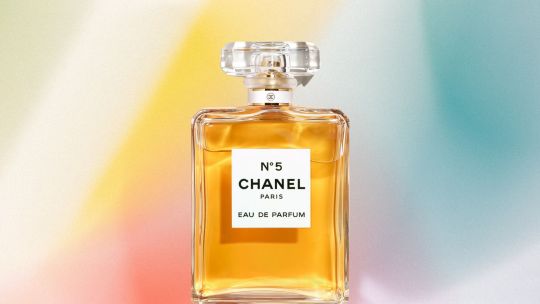
Chanel N ° 5 – The Iconic and Timeless Masterpiece
Chanel N ° 5 is undoubtedly one of the most iconic and timeless perfumes in the world of fragrances. It is more than just a scent, it is a true work of art of perfumery, and the epitome of luxury, elegance, and femininity. The perfume was created by Ernest Beaux for Gabrielle Chanel in 1921 and has since become the most famous and sold fragrance in the world. It has been described as a mythical perfume par excellence, a huge bouquet, and the perfect fragrance for a woman. (via Chanel N ° 5 – The Iconic and Timeless Masterpiece)
#chanelno5#chanel#perfume#fragrance#iconic#masterpiece#paris#PerfumeLovers#ScentOfTheDay#FragranceCollection#NichePerfumes#luxuryfragrances#PerfumeReview#SignatureScent#PerfumeAddict#ScentStories#PerfumeDiscovery
1 note
·
View note
Link
Quem não se lembra da polémica declaração de Marilyn Monroe, quando questionada por um repórter sobre o que usava para dormir, respondeu: “Apenas duas gotas de Chanel Nº.5“ Chanel Nº5, o início Como todas as histórias que se perdem na memória, também a história deste perfume é feita de algumas lendas. Diz-se que o nascimento do Nº.5 aconteceu depois de Coco Chanel ter conhecido o perfumista Ernest Beaux, em 1920, numa altura em que os estilistas dedicavam-se a criar roupa e os perfumistas a criar perfumes. Chanel lançou o desafio: queria um perfume que “cheirasse como uma mulher e não como uma rosa”. Depois de Beaux apresentar uma série de amostras numeradas, a escolhida foi a número 5, pois Coco ia apresentar a sua colecção no dia 5 do quinto mês (Maio), acreditando que esse número daria sorte. Se esta história é real ou não, não temos a certeza, mas que o número acabou por dar sorte, disso parece não haver muitas dúvidas. Agora, o que pouca gente conhece, é a explicação científica que associa esse perfume a uma boa noite de sono. A resposta está nas flores do Ylang-ylang, que devem ser colhidas ao raiar do dia e postas para secar imediatamente, para que o seu óleo essencial tenha boa qualidade. Basta uma gota de Óleo Essencial de Ylang-ylang (presente no Chanel Nº.5) no travesseiro para harmonizar o sono. Perfume de Marilyn Monroe Talvez por isso era a companhia de Marilyn nas suas noites de sono. A melhor publicidade alguma vez feita a este perfume não foi intencional e teve Marilyn Monroe como protagonista. Porém, mais de meio século depois de sua morte, parece que não foi bem isto que a diva do cinema americano quis dizer. A Chanel aproveitou a descoberta de uma gravação que esclarece a fala de Marilyn para anunciá-la como a nova embaixadora global da icónica fragrância. “Os jornalistas perguntaram-me ‘O que você usa para dormir? A parte de cima de um pijama? A parte de baixo? Uma camisola?’ ‘Então eu disse ‘Chanel Nº.5’, porque é a verdade. E eu não quis dizer que durmo nua”, afirmou à Life Magazine, em 1955. Apesar de toda a sedução envolvida na conversa com o repórter, Marilyn também dá sinais de ingenuidade, espontaneidade e feminilidade, características perfeitas para a cara da campanha Chanel. Mas a que é que se deve o sucesso duradouro de um perfume com 95 anos? Há quem acredite que o status que a marca Chanel tem no mercado permite-lhe atrair o interesse de mulheres, de vários estratos sociais, que procuram o estatuto de riqueza e exclusividade que a marca continua a representar nos dias de hoje, que não é exclusivo aos perfumes e que se estende a acessórios ou peças de roupa. E qual era a mulher que não gostaria de usar o mesmo perfume que uma das estrelas de Hollywood mais sexys da altura (ou mesmo de sempre)? :)
0 notes